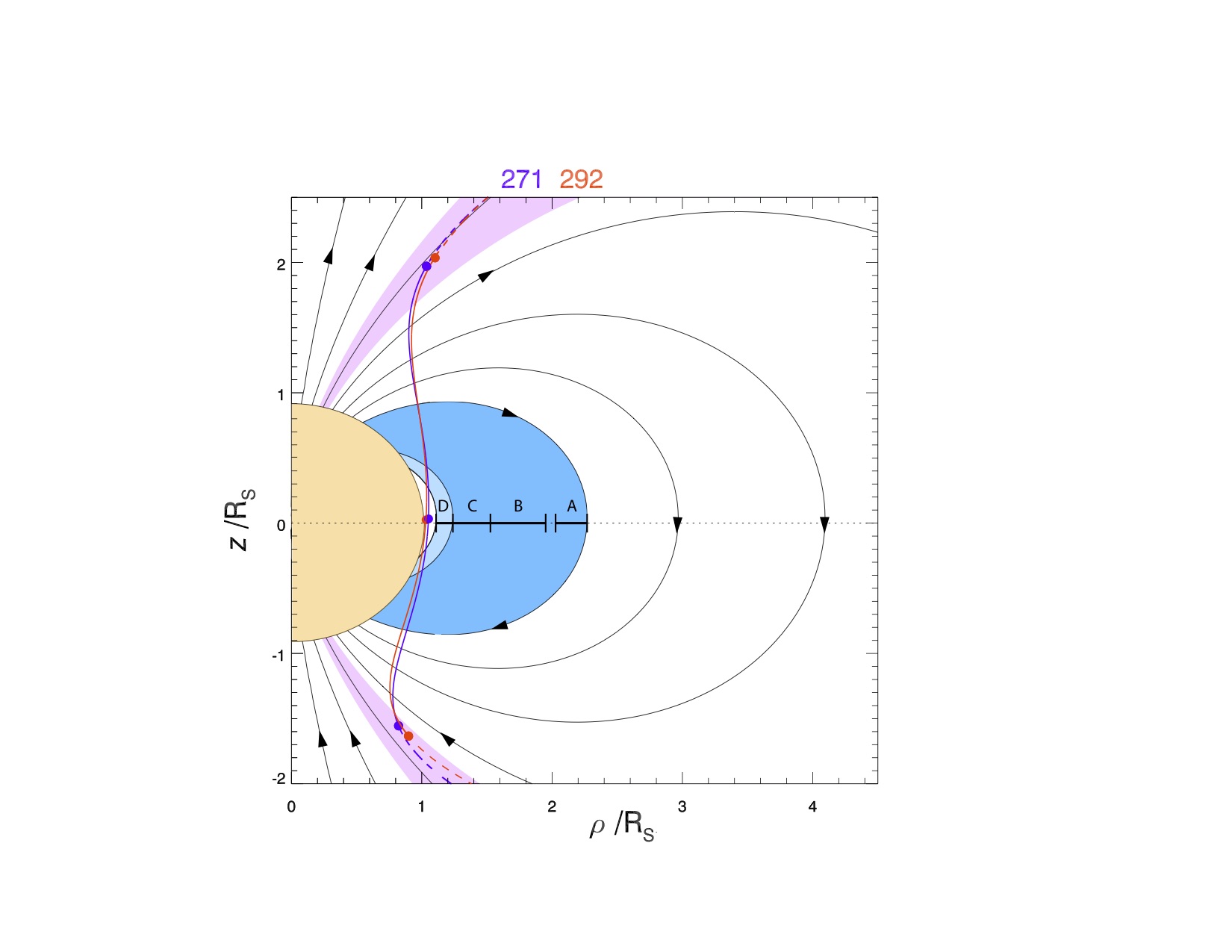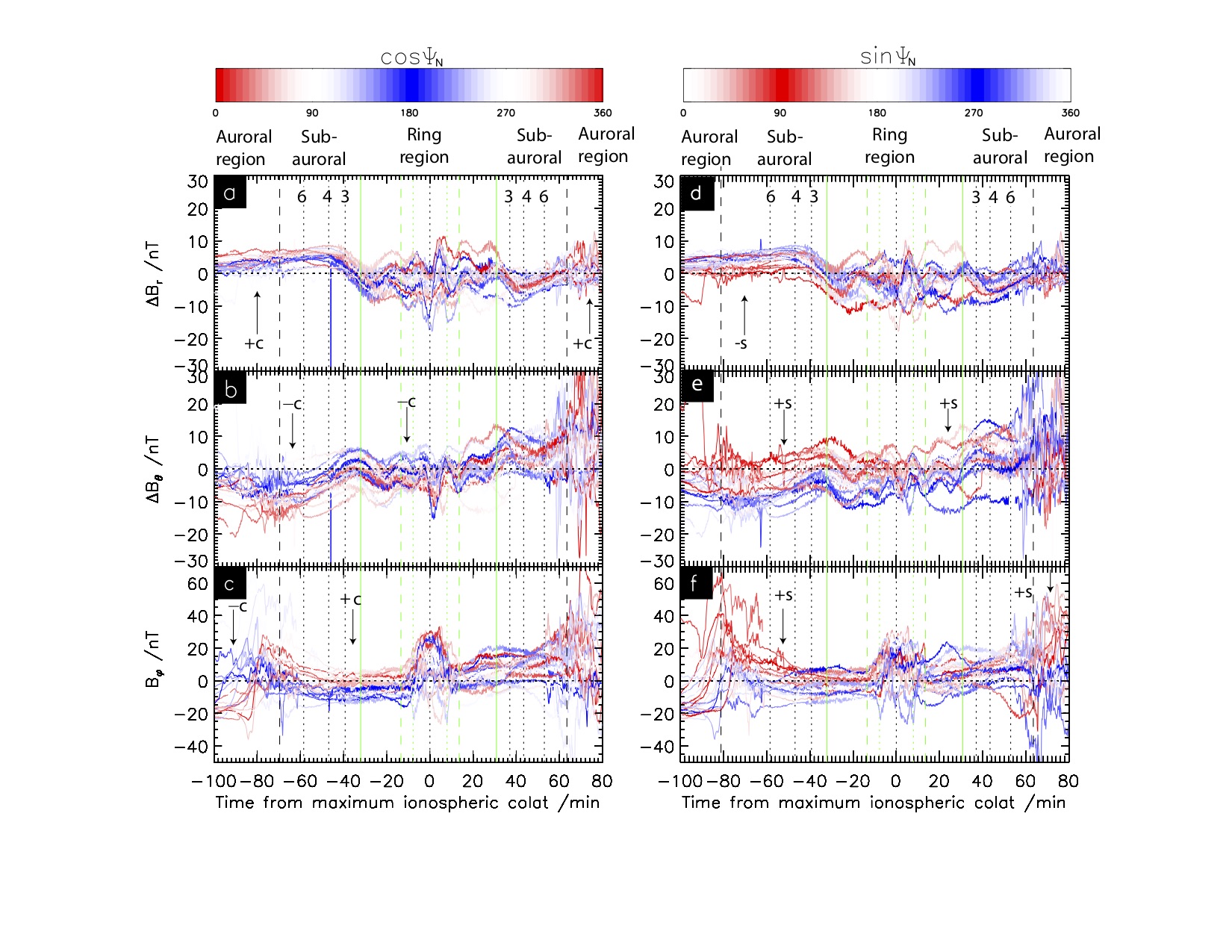MIST
Magnetosphere, Ionosphere and Solar-Terrestrial
Cassini’s Grand Finale:- Planetary Period Oscillations are everywhere and the dayside field ‘lags’
by Gabby Provan (University of Leicester)
Saturn’s Planetary Period Oscillations are oscillations at close to Saturn’s planetary period which have been observed to organize all of Saturn’s ionospheric and magnetospheric parameters throughout the Cassini mission. There are two oscillatory systems, one in the Northern hemisphere and one in the Southern. The enduring mystery is that so far we have yet to understand how a perfectly axisymmetric planetary magnetic field can create such oscillations
In this paper, we study the magnetic field throughout the Cassini Grand Finale orbits. On these orbits Cassini passed from the northern auroral region in the dawn sector, through the gap between the D ring inner edge and Saturn’s atmosphere, and outbound to the southern auroral region in the dusk sector (See Figure 1). We observe dual PPO modulations on auroral, subauroral, ring-region and intra-ring region field lines – in other words everywhere (see Figure 2). This is the first time that PPOs have been observed on and inside ring region field lines. The presence of such field perturbations may provide an explanation for apparent PPO-related phenomena observed in the ring material itself, through the action of these fields on charged dust grains (see e.g. Chancia et al., 2019).

Figure 1: Plot of the periapsis pass trajectories of the initial and final proximal orbits, Revs 271 (blue) and 292 (red), projected into a meridian plane in cylindrical coordinates. The darker blue field-aligned area corresponds to field lines mapping through the main ring region in the equatorial plane, between the inner boundary of the C ring and the outer boundary of the A ring, while the lighter blue field-aligned area corresponds to field lines mapping through the D ring.
Next, we considered the residual magnetic field, having discounted the magnetic signature of the PPOs and Saturn’s ring current from the observed magnetic field observations. We found that the residual azimuthal field had a lagging configuration in the subauroral region with a magnitude ~3-5 nT. These fields extend essentially unmodified inwards, crossing the ring region and the field lines mapping to Saturn synchronous orbit, to the outer boundary of D ring field lines. The lagging field indicates a field-aligned current flow of ~0.25 MA rad-1 flowing from the southern ionosphere toward the C and inner B rings. The physical origin of the extended region of lagging dayside fields remains unclear.

Figure 2: Field data from all the proximal orbit periapsis passes, color-coded according the northern PPO system phase. The data are plotted versus time from their field-parallel points taken as t = 0 (central vertical black dotted line), over the interval between -100 and +80 min, Vertical dashed lines indicate the equatorward boundary of the auroral region. The green solid lines mark the field line passing through the outer boundary of the A ring, while the green dashed and dotted lines mark the field lines passing through the outer and inner boundaries of the D ring, respectively. Data in Figures 2a-2c on the left are color-coded by northern PPO phase such that phases near 0°-360° are colored red and phases near 180° blue. Similarly, data in Figures 2d-2f on the right are color-coded by northern PPO phase such that phases near 90° are colored red and phases near 270° blue.
For more information, please see the paper:
Provan, G., Cowley, S. W. H., Bradley, T. J., Bunce, E. J., Hunt, G. J., Cao, H., & Dougherty, M. K. ( 2019). Magnetic field observations on Cassini's proximal periapsis passes: Planetary period oscillations and mean residual fields. Journal of Geophysical Research: Space Physics, 124. https://doi.org/10.1029/2019JA026800